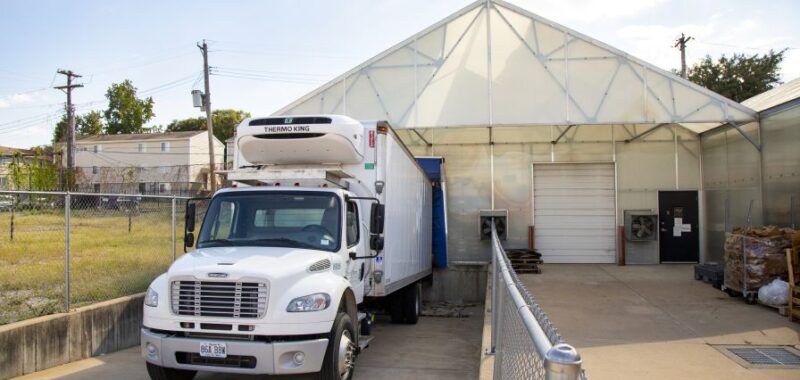
Commercial auto insurance for greenhouse delivery businesses. | Hortica
Logging multiple hours in a truck or delivery van daily might be routine for your fleet drivers, but that doesn’t make the road any less risky for them. An estimated 45,000 people lose their lives in preventable traffic crashes annually, with a significant number of incidents attributable to distracted driving.
The three primary types of distracted driving — visual, manual, and cognitive — pose serious risks for delivery drivers and organizations — those with one vehicle or a fleet of vehicles. Addressing these risks through education, policy implementation, and technology is essential to promoting safety and managing risk.
Understanding the Three Types of Distracted Driving:
Visual Distractions
Visual distractions occur when a driver takes their eyes off the road. Common visual distracted driving examples include looking at a GPS, reading a text message or billboard, rubbernecking, or glancing at a passenger. Even a brief lapse in attention can have fatal consequences. Looking away from the road for just two seconds doubles the risk of a crash, making preventing visual distracted driving essential.
Manual Distractions
Manual distractions while driving involve taking one or both hands off the wheel. Activities such as eating, drinking, smoking, vaping, adjusting the radio, applying makeup, or using a phone require physical engagement that reduces control over the vehicle. The Federal Motor Carrier Safety Administration (FMCSA) says 80% of crashes or near-crashes involved some form of driver inattention within three seconds of the incident.
Cognitive Distractions
Cognitive distractions and driving risks occur when a driver’s mind is not fully focused on operating the vehicle. This can include engaging in deep conversations with passengers or on the phone, daydreaming, drug or alcohol intoxication (a full third of crash fatalities), or even fatigue or anger-induced inattention. Thousands of crashes each year can be attributed to cognitive distractions, as drivers who are mentally preoccupied often fail to react to sudden changes on the road.
How Distracted Driving Is Impacted by Safety and Prevention
The impact of distracted driving extends beyond physical injuries to financial and legal consequences. Businesses that employ drivers face increased liability and costs, including:
- Potential lawsuits and legal settlements.
- Reputational risk and driver citations.
- Productivity losses from vehicle downtime and employee injuries.
- Costly claims and higher insurance premiums.
In a survey of executives at small to mid-size companies, 72% expressed concerns about rising litigation and multi-million dollar verdicts in their industry.
6 Distracted Driving Prevention Strategies
As a horticultural business owner, prioritizing driver safety is essential — not just for protecting workers but also for maintaining operational efficiency and reducing liability risks. Encouraging defensive driving habits can help minimize accidents, safeguard your bottom line, and promote a culture of responsibility on the road.
To mitigate risks, businesses should adopt distracted driving prevention measures, including the following:
1. Hire Safe Drivers
Screen potential hires for prior traffic violations by conducting Motor Vehicle Record (MVR) and background checks. Prioritize candidates with defensive driving certifications and require a driving test as part of the job application and onboarding process.
2. Implement Distracted Driver Training
Provide regular training programs on the dangers of distracted driving (as well as speeding, tailgating, and failing to use a turn signal) to all workers. Use real-life case studies and video simulations and require annual retraining sessions to reinforce safe driving habits.
3. Establish Clear Policies Surrounding Safe Driving
Enforce a strict no-texting policy while driving and require drivers to safely pull over if they need to make a call. Implement rules against performing other non-driving tasks while behind the wheel.
4. Use Technology To Reduce Distracted Driving
Equip vehicles with collision-avoidance detection, driver monitoring systems to detect inattention, and dashcams to monitor external factors. Use anti-distraction apps that disable smartphones when a vehicle is in motion.
5. Prepare for Each Route
Drivers should review routes, check for potential hazards or construction zones, set GPS devices, schedule necessary breaks, and organize paperwork before ever starting the engine.
6. Encourage Defensive Driving Habits
Paying attention to upcoming on-ramps and intersections and recognizing the driving patterns of other vehicles by anticipating their movements can prevent accidents. In addition, keeping an appropriate distance from other vehicles allows for a better reaction time in emergencies.
Protecting Your Business Against Distracted Driving Risks
Accidents caused by distracted driving can have severe financial and reputational implications for horticulture businesses. Comprehensive commercial auto insurance can help mitigate losses, including but not limited to bodily injury and medical expenses; vehicle and property damage; and uninsured/underinsured motorist incidents.
Employers should work closely with insurers that specialize in greenhouse and horticultural businesses to implement effective driver risk management strategies.
Eyes on Safety and on the Road
Preventing visual, manual, and cognitive distractions requires a proactive approach from both drivers and businesses. By hiring safe drivers, implementing effective training programs, leveraging technology, enforcing clear policies, and more, horticulture businesses can reduce the occurrence of distracted driving-related incidents. Ultimately, prioritizing road safety not only protects lives but also safeguards your business.

